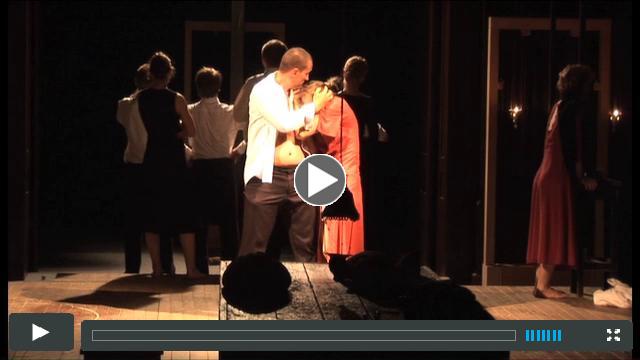Poland's Teatr ZAR uses song, chanting, physical theater, and rich sets to examine birth, death, pleasure, and pain. The Gospels of Childhood Triptych
is staged in three acts during a single evening, with the audience and
actors inhabiting a different set for each act: the first and third take
place in the MCA Theater with the audience on stage; and the second is
in the MCA's 2nd-floor atrium. The performances take place at the Museum
of Contemporary Art (MCA), Chicago, March 29 - April 1, 2012, and are
presented by MCA Stage in association with Goodman Theatre.
Inspired by Eastern Orthodox ancient sacred music, The Gospels
draws on texts from the apocryphal gospels and the 19th century Polish
romantic poet Juliusz Slowacki. The work is the culmination of a decade
of research by artistic director, Jaroslaw Fret, and the company. The Gospels exemplifies a trend in contemporary Polish theatre, described as "theatre out of the spirit of music."
 |
| VIDEO |
Part 1: Gospels of Childhood / The Overture
(Theater): Based on texts from the apocryphal gospels, the overture to
the triptych tells the story of resurrection. Its musical structure is
based on the chant singing tradition of Georgia, Bulgaria, and Greece
and reveals the story of Lazarus, his sisters, and Mary Magdalene, who
in the Gnostic tradition is considered one of the disciples.
Part 2: Caesarean Section / Essays on Suicide
(2nd floor atrium): Explores the question of freedom and its
limitations that draws on the music of Corsica, intertwining Bulgarian,
Romanian, Icelandic, and Chechen songs, combined with the more modern
music of Erik Satie and Ástor Piazzolla.
Part 3: Anhelli / The Calling
(Theater): The poem "Anhelli," by Slowacki, follows a tragic journey of
a young man through Siberia and portrays the struggles for independence
and a missed calling due to human weakness. Teatr ZAR created a musical
score for Anhelli based on Byzantine and Sardinian Paschal hymns.

No comments:
Post a Comment
Note: Only a member of this blog may post a comment.